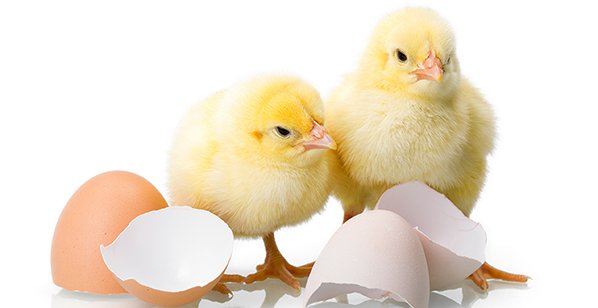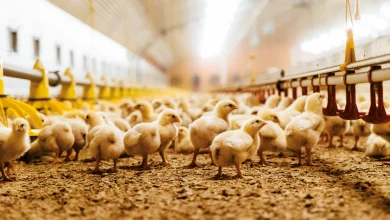Effective Ways to Increase Fertility and Hatchability Rates in Eggs

Effective Ways to Increase Fertility and Hatchability Rates in Eggs
HARIHARAN AND K. SHIBI THOMAS,
Livestock Farm Complex,
Veterinary College and Research Institute,
Orathanadu-614 625
Tamil Nadu Veterinary and Animal Sciences University (TANUVAS)
HATCHABILITY
Hatchability refers to the percentage of eggs hatched. It is otherwise the percentage of fertile eggs hatched (or) the percentage of chicks hatched from all eggs placed in incubation.
Factors that influence the hatchability of eggs are fertility, genetics, nutrition, diseases, egg selection and handling of hatching eggs
FERTILITY
Fertility refers to the capacity to reproduce. It is the factor which determines the number of offspring that may be obtained from a given number of eggs. The male mates with a hen and the sperm from the male fertilize the ovum which is found on the yolk. Factors influencing fertility include the number of females mated to a one male, the age of breeders, the length of time between mating and storing eggs for hatchability and the management practices.
GENETICS
Both research workers and hatchery operators understand that hatchability is an inherited trait. Therefore, hatcheries should prioritize selecting strains with high fertility and hatchability. The genetic factors which influence the hatchability are
- Inbreeding: Close breeding without strict selection for hatchability has been demonstrated to reduce hatchability in chicken and turkeys.
- Cross breeding and incross breeding: Crossing pure breeds or incross breeds typically leads to increased hatchability, although the outcomes depend on the genetic makeup of the parent stock
- Lethal and semi lethal genes: Poultry are known to carry over 30 lethal genes or semi lethal genes, which can result in embryo death before the end of incubation or shortly after hatching
- Egg production: Eggs laid by hens with high egg production rates are generally more fertile and exhibit higher hatchability compared to those laid by low producers.
- Age: Hatchability tends to be highest during the first laying year for both chickens and turkey.
NUTRITION
The egg must contain all the essential nutrients needed by the embryo at the time it is laid down by the hen, since there is no further contact with the mother once the egg is completed. Therefore breeder hens must be fed with rations which supply adequate quantities of the nutrients needed for embryo development. The nutrients most likely to affect hatchability are the vitamins and trace minerals. For high hatchability and good development of the embryo, breeder hens require greater amounts of vitamins A, D, E,
B-12, Riboflavin, pantothenic acid, niacin and the mineral manganese.
DISEASES
Several diseases can affect hatchability in poultry, either directly by impacting the developing embryos or indirectly by affecting the health and reproductive capacity of the parent birds. Some of the common diseases that can negatively impact hatchability in poultry are
- Avian Influenza (AI): Avian influenza can cause embryonic death, reduced hatchability, and even death in developing embryos. Infected breeder hens may also produce eggs with weakened shells, leading to reduced viability.
- Infectious Bronchitis (IB): IB virus can infect the reproductive tract of laying hens, causing poor shell quality, abnormal egg formation, and reduced hatchability due to embryo mortality.
- Newcastle Disease (ND): Newcastle disease virus can cause respiratory distress and reproductive disorders in laying hens, leading to reduced fertility and hatchability. In severe cases, embryo mortality may occur.
- Salmonella Infection: Salmonella contamination in breeder flocks can lead to egg contamination, resulting in reduced hatchability or even embryo mortality.
- Mycoplasma Infections: Mycoplasma gallisepticum and Mycoplasma synoviae can cause respiratory infections and reproductive disorders in poultry. Infection in breeder flocks can lead to reduced fertility, poor hatchability, and increased embryo mortality.
- Egg Drop Syndrome (EDS): EDS virus can cause a drop in egg production and reduced hatchability. Infected embryos may also experience mortality.
- Egg shell Quality Issues: Diseases or nutritional deficiencies that affect calcium metabolism in laying hens can lead to poor eggshell quality, resulting in higher rates of egg breakage and reduced hatchability.
- Egg Transmitted Infections: Various bacterial, viral and fungal infections can be transmitted vertically through the egg, affecting embryo development and hatchability.
- Marek’s Disease: Marek’s disease can cause immunosuppression and neurological symptoms in affected birds, leading to reduced reproductive performance and hatchability in breeder flocks.
- Coccidiosis: Severe coccidiosis infections can weaken the health of breeder birds, reducing egg production and hatchability.
Proper biosecurity measures, vaccination programs, sanitation practices, and monitoring of breeder flock health are crucial for preventing and managing diseases that can impact hatchability in poultry operations. Additionally, routine veterinary checks and diagnostic testing can help identify and address potential disease issues early on.
OTHER FACTORS IMPACTING EGG HATCHING:
EGG SELECTION: Eggs of inferior quality exhibit lower hatchability compared to those of superior quality such as external condition, shell integrity and internal content.
SANITATION: For successful hatching, it is imperative that eggs utilized are clean and stored in hygienic containers within a sanitary egg holding area. Eggs contaminated with bacterial organisms typically exhibit poor hatchability, resulting in the production of lower-quality chicks.
TOXICITY: The presence of paint or varnish on the interior of an incubator, or on the trays, can significantly diminish hatch rates, potentially by up to 25%. However, this detrimental impact tends to dissipate within approximately 30 days, indicating that oxidation of the paint may alleviate the issue.
To mitigate this problem without compromising hatch rates, the incubator can be effectively fumigated with formaldehyde gas at concentrations recommended for proper hatchery fumigation. Fumigation should be carried out promptly after the paint has dried, while ensuring the incubator operates at the recommended temperature and humidity levels for egg incubation.
EGG CANDLING: For small poultry producers, it may be advisable to candle chicken eggs on the 7th and 18th day of incubation. Candling facilitates the detection of infertile eggs and early embryo mortality. Consequently, issues within the hatching flock can be identified before the completion of the incubation period.
IMPROPER FUMIGATION: Excessive and improper fumigation techniques can lead to elevated mortality rates among developing embryos.
EGG HANDLING: Aggressive handling of hatching eggs prior to setting can elevate the incidence of embryo mortality, particularly between the 4th and 13th day of incubation. Additionally, rough treatment during incubation may cause eggshell membrane rupture, resulting in reduced hatchability.



